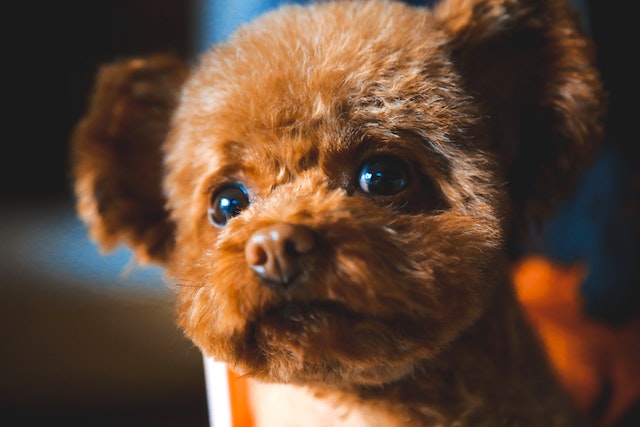Surgical recovery can be a stressful and challenging time for any pup, but there are plenty of ways to make the process smoother and easier on your four-legged friend. As a pet parent, you want to make sure your pup is comfortable and doing all that it can to bounce back to good health. Wellness wizardry is the perfect way to do just that! Here, we’ll provide 10 clever strategies to help your pup recover from surgery in no time. From supplements to toys, these tips will keep your pup happy and healthy throughout their healing journey. Read on to find out more!
1) Keep Them Comfortable

Make sure your pup is resting in a comfortable area with plenty of blankets and pillows. Provide them with a soft and cozy bed and try to keep them warm. Use a heating pad to ease any discomfort they may be feeling. If they are feeling particularly anxious or uncomfortable, consider using a calming product like a pheromone diffuser or CBD oil to help ease their stress. It’s important to prioritize their comfort during this time of healing.
2) Give Them Time to Rest
One of the most important things you can do to help your pup recover from surgery is to give them plenty of time to rest. Dogs need rest to heal and recover from any procedure, so it’s essential that they have a comfortable, quiet space to rest and relax. Consider setting up a cozy spot for your pup to nap, with soft bedding and plenty of blankets. Try to limit their activity and playtime, as this can put additional strain on their body and slow down the healing process. Remember, a little bit of rest can go a long way towards helping your pup feel better and bounce back after surgery.
3) Follow Their Vet’s Orders

Listen to your veterinarian’s recommendations and make sure to follow their instructions for your dog’s recovery. They may recommend certain medications, a specific diet, or restricted activity levels. Trust their expertise and ask any questions you may have to ensure a smooth recovery process for your furry friend.
4) Keep Their Incision Site Clean
It’s crucial to keep your pup’s incision site clean to avoid any infections. Clean the area with warm water and mild soap, and pat it dry with a clean towel. Keep an eye out for any swelling, redness, or discharge, as these could be signs of an infection. If you notice any of these symptoms, contact your vet right away.
5) Change Their Bandages Regularly

It’s important to follow your vet’s instructions for changing your dog’s bandages after surgery. Regular bandage changes will help prevent infection and keep their incision site clean. Make sure you have all the necessary supplies, such as sterile gauze, antiseptic solution, and adhesive tape. And always be gentle and patient when changing their bandages to avoid causing any additional discomfort.
6) Keep Them on a Leash
Limit your dog’s movement during the post-surgery recovery period by keeping them on a leash when outside. This will prevent them from running or jumping, which can disrupt the healing process and potentially cause further harm. It’s important to closely monitor their activity levels and gradually increase them as advised by your vet.
7) Avoid Stairs

To prevent any accidental falls or injury, it’s important to limit your dog’s access to stairs while they recover from surgery. This means carrying them up and down stairs, or installing a baby gate to keep them confined to one floor.
8) Put Their Toys Away
Limit access to toys to prevent overexertion or chewing on the incision site. It’s important to remember that after surgery, your pup’s activity level needs to be limited. If they’re overly excited or rambunctious, it can put too much strain on their body, slow the healing process, or cause them to accidentally rip out their stitches. To prevent this from happening, keep their toys out of reach and only allow them to play with them when you can supervise their behavior.
One way to occupy your pup’s mind while they recover is with puzzle toys. These toys will require your dog to think and solve problems, which can be a great way to distract them from their discomfort. If you’re not sure what toys to use, ask your vet for suggestions.
While it’s tough to see your dog in pain or discomfort, it’s essential to keep their activity level low after surgery. It’s important to take steps to keep them calm and prevent over-excitement, and putting their toys away is just one of the ways to do that. By being proactive in your dog’s recovery, you can help them heal faster and return to their normal, happy selves in no time.
9) Limit Their Activity

During your dog’s recovery, it’s important to limit their activity. This means no running, jumping, or playing. Stick to short, slow walks around the block to get some fresh air and exercise. Overexertion can lead to complications with healing, so be sure to follow your vet’s guidelines for activity restrictions. Remember, a little patience goes a long way towards a successful recovery!
10) Check In With Their Vet
Don’t hesitate to reach out to your vet if you notice anything unusual about your dog’s recovery. They’ll be able to advise you on any additional steps you can take to help your pup feel their best. Remember, their expertise and guidance is essential to your dog’s recovery, so don’t hesitate to give them a call if you have any concerns.


